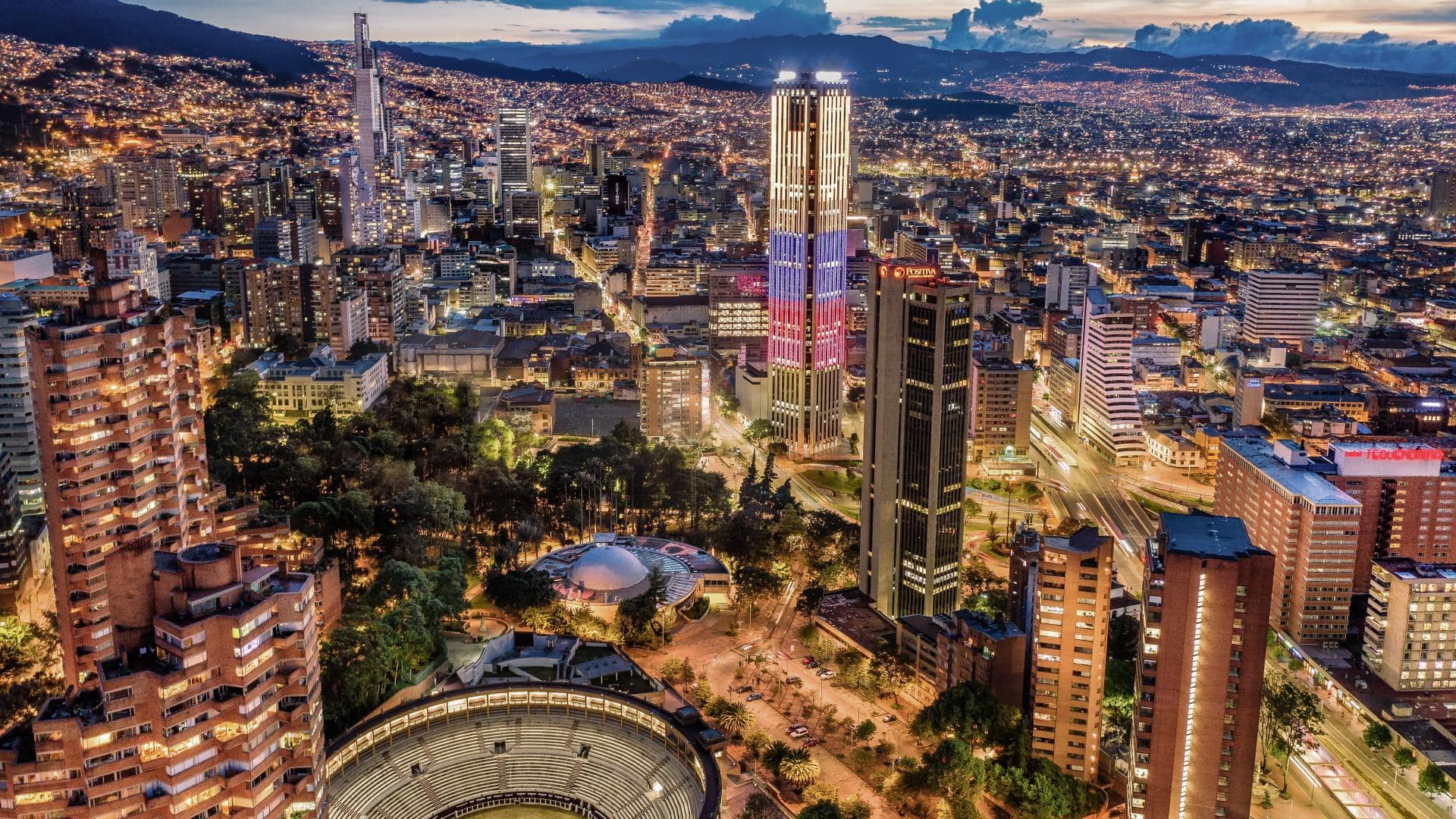
34 interesting facts about Bogota
- 👁️ 438
Bogotá, the capital city of Colombia, stands as a testament to the rich cultural tapestry and the vibrant spirit of the country. Nestled high in the Andes at 2,640 meters (8,660 feet) above sea level, it is not only one of the highest capitals globally but also a melting pot of urban sophistication and colonial charm. Bogotá is a city where modern skyscrapers stand alongside historical plazas, and lush green parks offer an escape from the bustling city life. It’s a place of diverse cultures, innovative cuisine, and a lively arts scene that reflects the complexities and contrasts of contemporary Colombia. Here are 34 interesting and informative facts about Bogotá that capture the essence and allure of this fascinating city.
- Bogotá was founded on August 6, 1538, by Spanish explorer Gonzalo Jiménez de Quesada.
- The city’s original name was Bacatá, which means “planted fields” in the language of the indigenous Muisca people.
- Bogotá is the political, economic, and cultural heart of Colombia.
- The city is officially known as Bogotá, Distrito Capital, reflecting its status as the nation’s capital.
- Bogotá has a population of over 7 million people, making it the largest city in Colombia.
- The city’s climate is classified as subtropical highland, resulting in mild temperatures year-round.
- Bogotá is home to the Gold Museum (Museo del Oro), which houses the largest collection of pre-Hispanic gold artifacts in the world.
- The city’s Ciclovía program closes over 120 kilometers (75 miles) of streets to cars every Sunday, allowing cyclists, runners, and skaters to use them freely.
- Monserrate is a mountain that dominates the city center of Bogotá, accessible by cable car, funicular, or a hike, offering panoramic views of the city.
- The Botanical Garden of Bogotá, Jose Celestino Mutis, is the largest botanical garden in Colombia.
- The Simón Bolívar Metropolitan Park is one of the largest urban parks in the world, covering over 400 hectares.
- Bogotá hosts the Ibero-American Theater Festival, one of the biggest theater festivals globally.
- The city’s TransMilenio bus system is one of the largest and most successful Bus Rapid Transit (BRT) systems in the world.
- La Candelaria, the historic center of Bogotá, is known for its colonial architecture, cobblestone streets, and vibrant cultural life.
- Bogotá has a thriving street art scene, with murals and graffiti that have transformed public spaces and buildings into works of art.
- The city is a major hub for music and hosts the annual Rock al Parque, one of the largest free rock festivals in Latin America.
- Bogotá’s Luis Ángel Arango Library is one of the most important public libraries in Latin America.
- The city is located on the Bogotá savanna, an elevated plateau in the Andes mountains.
- Tejo, Colombia’s national sport that involves throwing metal discs at gunpowder targets, is popular in Bogotá.
- The Salt Cathedral of Zipaquirá, an underground church built within the tunnels of a salt mine, is a short drive from Bogotá and a popular tourist attraction.
- The Colombian National Museum, one of the oldest in the Americas, holds a vast collection of Colombian art, history, and archaeology.
- Bogotá is considered the biking capital of Latin America, with over 550 kilometers (340 miles) of bicycle routes and paths.
- The city’s International Book Fair (Feria Internacional del Libro de Bogotá) is one of the most important literary events in the Spanish-speaking world.
- Andrés Carne de Res, located just outside Bogotá, is one of the most famous and eclectic restaurants in Colombia.
- The Plaza de Bolívar is Bogotá’s main square, surrounded by landmarks such as the Primatial Cathedral and the Capitol Building.
- Bogotá has been nicknamed “The Athens of South America” because of its many universities and libraries.
- The city’s El Dorado International Airport is among the busiest in Latin America.
- Bogotá’s elevation makes it one of the highest capitals in the world.
- The city has become a significant fashion center, hosting Bogotá Fashion Week annually.
- Ajiaco, a traditional chicken and potato soup, is considered Bogotá’s signature dish.
- The city was designated a UNESCO City of Music in recognition of its vibrant music scene.
- Bogotá is the administrative center of the Roman Catholic Church in Colombia, housing the Archbishop’s Cathedral of Colombia.
- The city has a rapidly growing technology sector, often referred to as the “Silicon Valley of South America.”
- The annual Festival of Lights in December transforms Bogotá into a wonderland of illuminated decorations, attracting visitors from around the country and the world.
Bogotá, with its rich history, diverse culture, and vibrant city life, stands as a testament to Colombia’s past and its dynamic present. The city’s blend of colonial charm and modern innovation creates a unique urban tapestry that fascinates visitors and residents alike. From the green expanse of its parks to the historical depth of its museums, and from its culinary delights to its bustling streets filled with art, Bogotá encapsulates the spirit of Colombia. As the city continues to grow and evolve, it remains a place where tradition and progress walk hand in hand, inviting the world to discover its many treasures.
Bogotá, the capital city of Colombia, stands as a testament to the rich cultural tapestry and the vibrant spirit of the country. Nestled high in the Andes at 2,640 meters (8,660 feet) above sea level, it is not only one of the highest capitals globally but also a melting pot…